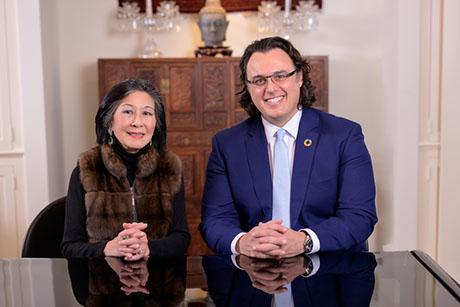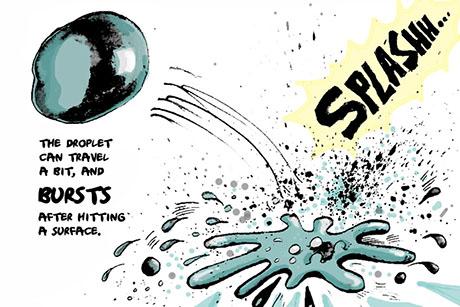Alumni Spotlight: John Wall (SB, SM ’75, ScD ’78) and Jennifer Rumsey (SM ’98)
The Cummins Connection
It’s 1991.
The first-ever web site is published, gas costs an average of $1.12 per gallon, and Jennifer Rumsey, SM ’98, walks into the office of John Wall, SB, SM ‘75, ScD ‘78, then Vice President of Advanced Heavy Duty Engine Development at engine design and manufacturing company Cummins. It was her first day as an intern, and she was 18 years old. Wall was – as he continued to be up until his retirement from Cummins just this past October – the MIT educational counselor for local high school students.
“My first exposure to engines happened when I worked for Cummins as an intern the summer before I went to college, and every summer while I was getting my undergraduate degree,” says Rumsey, who recently succeeded Wall as Cummin’s chief technical officer. “I was fascinated by complex systems, especially those that combined mechanical, electrical, and chemical engineering.”
Wall had been at the company for five years, a point in his career trajectory that connected back to 1972, when he had met Leroy Besone, SM ‘72, his new roommate and a master’s student in mechanical engineering at MIT.
“After he graduated, Leroy returned to his job at Chevron Research in San Francisco,” remembers Wall. “One day he called me up and asked if I wanted to be an intern there that summer. I said, ‘Give me about 2 seconds to think about this’ and then went out to work in the engine lab at Chevron for two summers. It was the first time that I had been working around engines and really getting into the research side of things, looking at engine lubrication and friction.”
In 1975, Wall earned bachelor’s and master’s degrees simultaneously from MechE’s Honors Program, then joined the Sloan Automotive Lab under Professor John Heywood for his ScD – as a Cummins Fellow. It was the 1970s, and John Heywood was in the middle of researching the mechanics of engine pollution (see page X). The EPA had just been formed, and many people were interested in solving this newly identified emissions problem.
Wall earned his ScD in 1978, then went back to work at Chevron.
“With that group,” he says, “we discovered the effect of fuel sulfur on diesel particulate emissions. It really helped us begin to build that bridge between engine technology, fuel technology, and atmospheric particulate emissions.”
In 1986, he got a call from Cummins.
“At Cummins, I got the opportunity to work on emissions from an engine technology standpoint, and that’s pretty much what I’ve been doing ever since. The fuel sulfur content turned out to be a big deal. In early emissions meetings with the EPA and fuel companies to negotiate future diesel fuel sulfur limits, I had the funny situation where I had done the research at Chevron, and the data that the oil companies were bringing in to talk to us engine companies about was actually my data.”
Wall’s first major challenge was controlling NOx emissions by reducing the temperature of combustion, and the solution he and his team developed was a significant innovation. Later, in the early 1990s, he and his team applied new electronic fuel systems that allowed unprecedented flexibility on system design, as well as computer models that provided a better view of the fluid mechanics going on inside the engine.
It was around that time that Wall, in his role as MIT educational counselor, first saw Rumsey’s technical capability and interest.
“It has been interesting to watch Jennifer’s career develop,” he says. “I am very excited to have someone coming into this role of CTO who is so experienced with engines and exhaust aftertreatment systems but also so knowledgeable about new technologies that will help lead to a cleaner environment and new sources of energy. Someone who is as passionate about people and team development as she is about technology development.”
After receiving her bachelor’s degree in mechanical engineering from Purdue University and her master’s degree from MIT MechE, Rumsey went to work in Cambridge, Mass., for Nuvera, a company that specializes in fuel processing and fuel cells. In 2000, she moved to Cummins, working in a variety of engineering roles across Cummins’ engine and components business units, including advanced technology development, new product development, and current product engineering.
“I found a passion for research and development as an intern at Cummins,” says Rumsey. “Here, I can see how my work is going to matter for the environment and for our customers. I like solving problems, but I really like developing solutions that will have an immediate positive and large-scale impact. I also really enjoy upstream research and working on projects that demonstrate a technology’s impact.
“John Wall had a major role in transforming Cummins products and emission technology in our industry,” she continues. “I intend to build on his legacy and develop that next generation of breakthrough innovations. We have a big focus on creating an environment where our global technical organization can work together to solve some of the world’s biggest challenges.”




